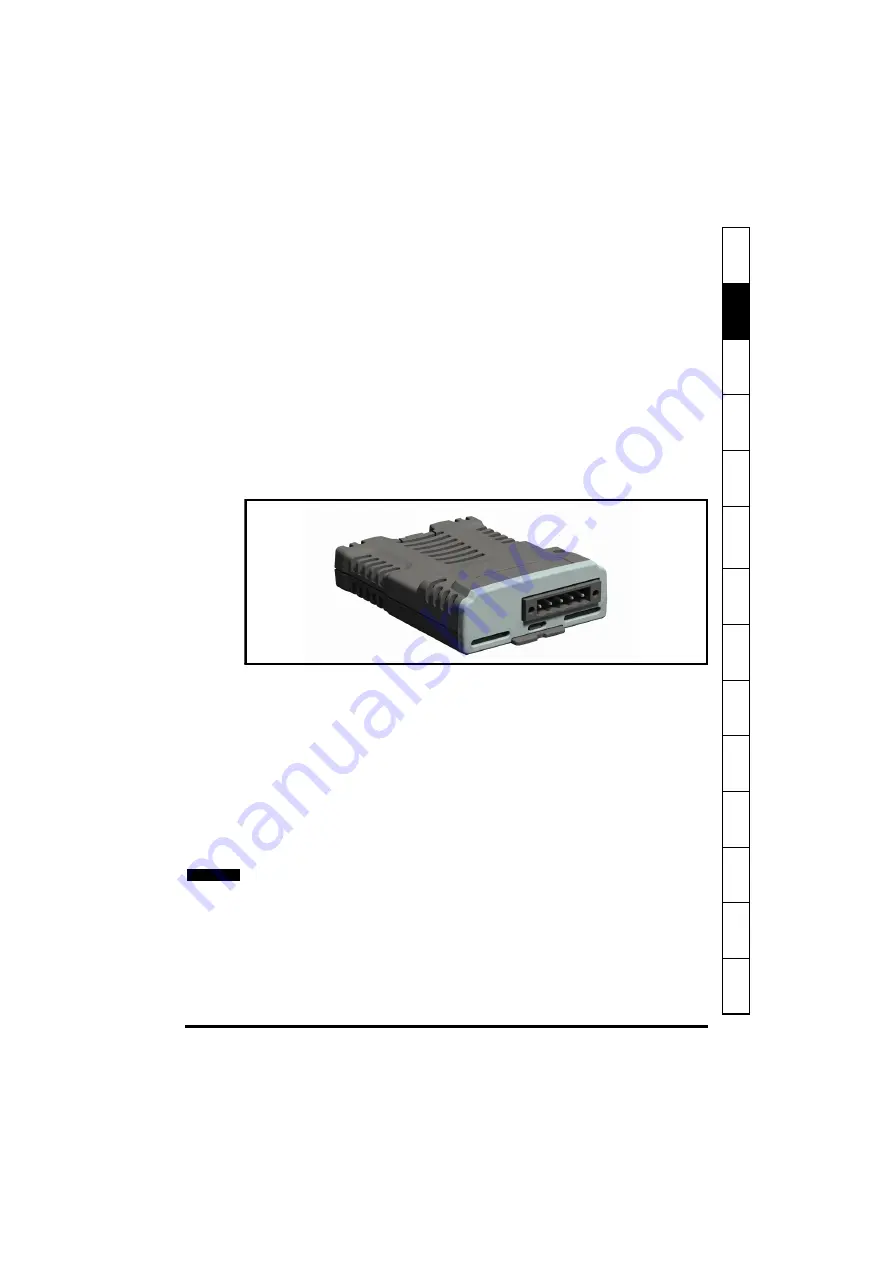
SI-DeviceNet User Guide
9
Issue Number: 2
S
Int
rod
uction
Mecha
El
Get
tin
Par
am
No
n cycli
Con
ED
S Fi
Ad
va
De
vi
D
Gl
In
Table 2.2 details the number of data words used to communicate the signals using the
DeviceNet network. It can be seen that the resulting reduction in cabling is significant.
DeviceNet can transfer data using two distinct modes. The first of these modes is cyclic
where signals are sent in predefined blocks at regular intervals. This is the equivalent of
the hard-wired example above in Figure 2-1.
The second method of transfer is called non-cyclic data and is used for sending values
that only need to be changed occasionally or where the source or destination of the
signal changes; this is the equivalent of a temporary patch lead that is removed after
use.
2.2
What is SI-DeviceNet?
SI-DeviceNet is a fieldbus Option Module which can be installed to the expansion slot(s)
in Unidrive M to provide DeviceNet slave connectivity.
It is possible to use more than one SI-DeviceNet or a combination of SI-DeviceNet and
other Option Modules to provide additional functionality such as extended I/O, gateway
functionality, or additional PLC features.
Figure 2-3 SI-DeviceNet Option Module
2.3
General specification
•
Supported data rates (bits per s): 500 k, 250 k, 125 k.
•
1 to 28 input/output polled data words supported.
•
Explicit communications (non-cyclic) provides access to all drive parameters.
•
8 pre-defined DeviceNet profiles supported.
2.4
Back-up power supply
The required drive can be connected to a back-up power supply. This keeps the control
electronics and Option Module powered up, allowing the SI-DeviceNet to continue
communicating with the DeviceNet master controller when the line power to the drive is
switched off.
The back-up supply is provided through the drive and not the connections on SI-
DeviceNet, which have an alternative use
.
NOTE
























